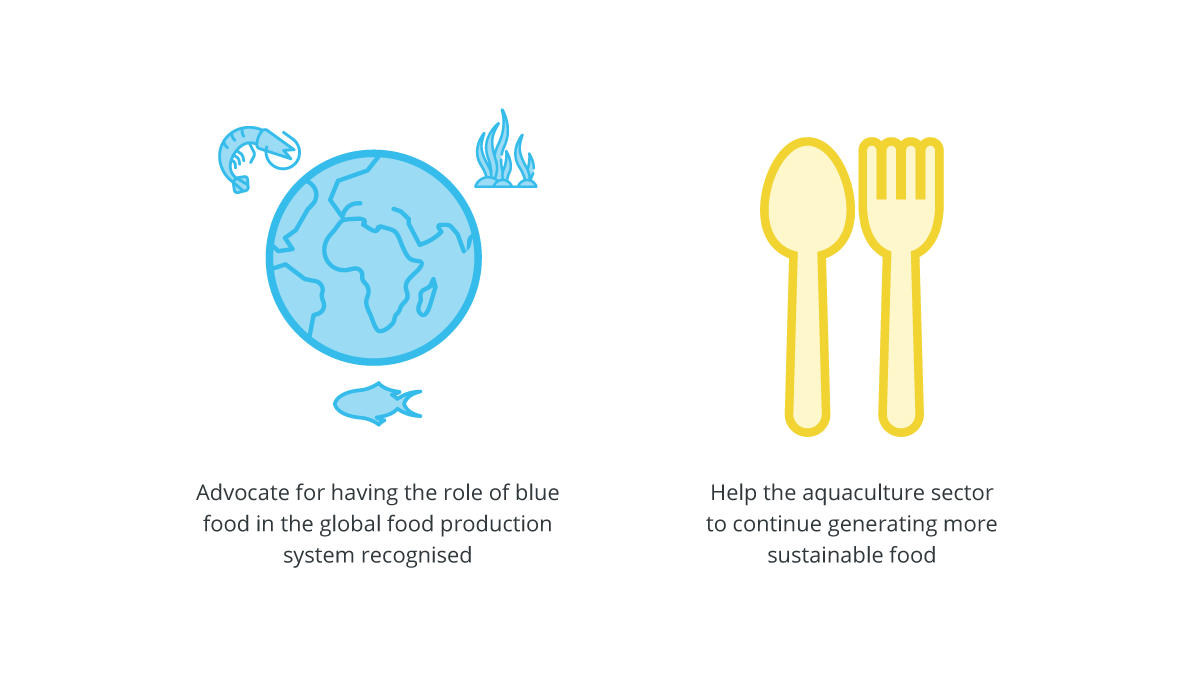The consequences of climate change are complex and far reaching and the following graphics help explain its impacts on the marine ingredients industry and the role the industry plays in global food security.
Oceans, the largest absorber of incoming solar radiation, are impacted by climate change
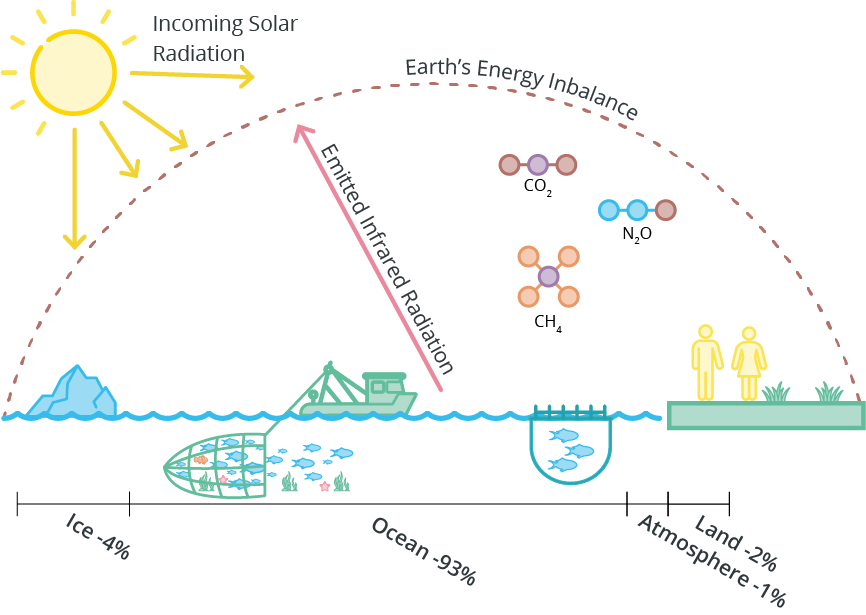
Five climate change drivers have mainly been impacting the marine ingredients industry
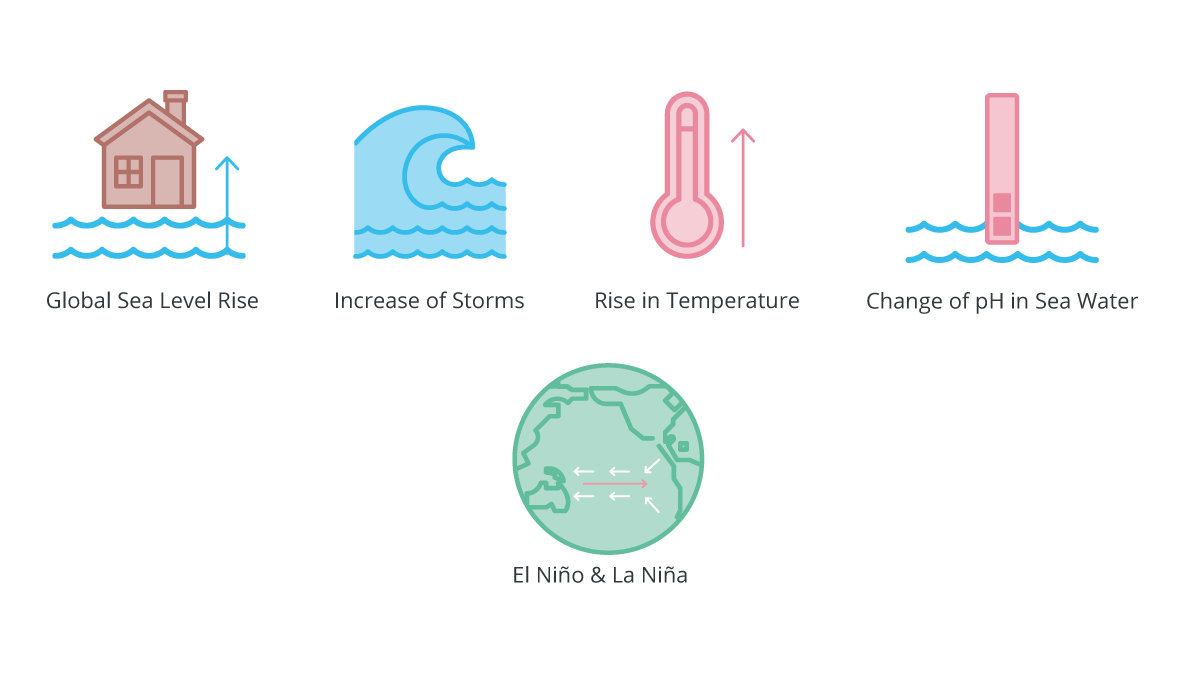
Fisheries and aquaculture can play a greater role in delivering nutrition…
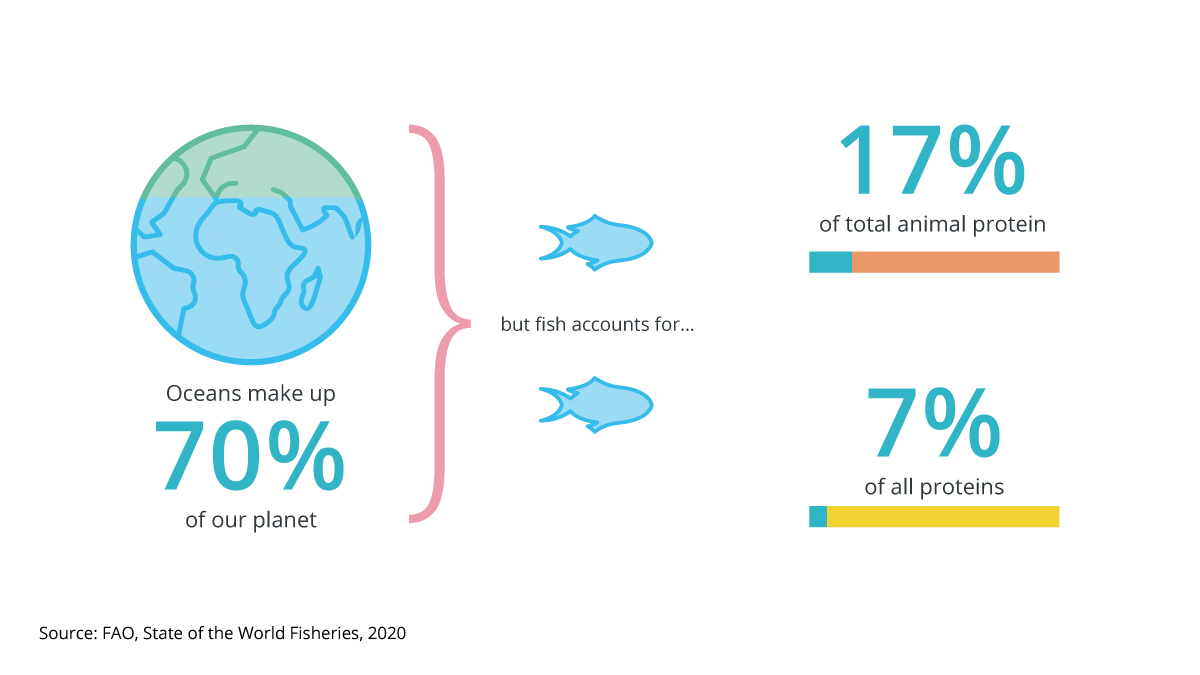
… by helping produce five times more farmed fish than it has been using raw material to produce fishmeal and fish oil
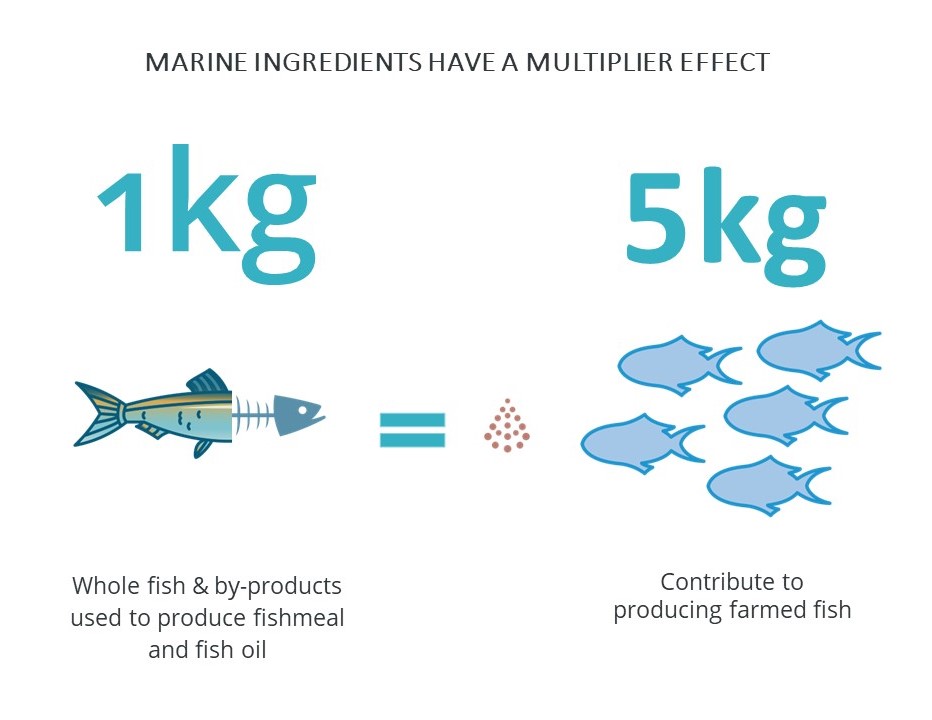
Source: Kok et al., 2020 [https://doi.org/10.1016/j.aquaculture.2020.735474]
The marine ingredients industry relies on a low carbon value chain, from fishing methods…
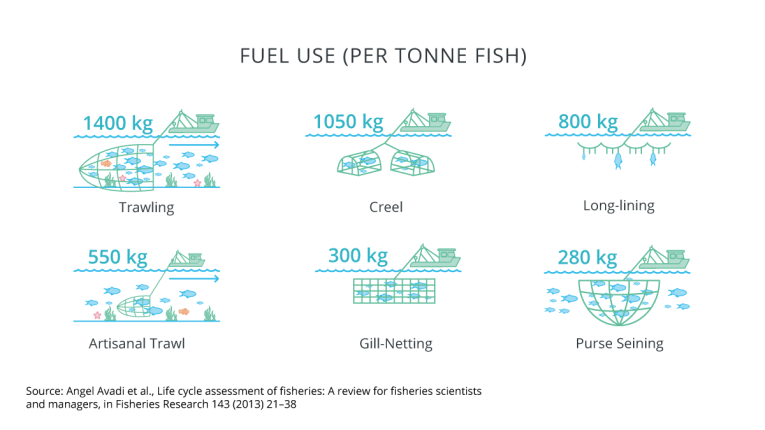
… to production and processing
CARBON FOOTPRINT (KG CO2 EQ. PER TONNE OF PRODUCT)

Key: PC = Protein Concentrate, BP = Byproduct, CN = China, FR = France, BR = Brazil, PE = Peru, DK = Denmark
The soy data are averages across each sector and do not differentiate sustainable or certified sources.
The use of by products, which would otherwise have been discarded, reduces pressure on the oceans
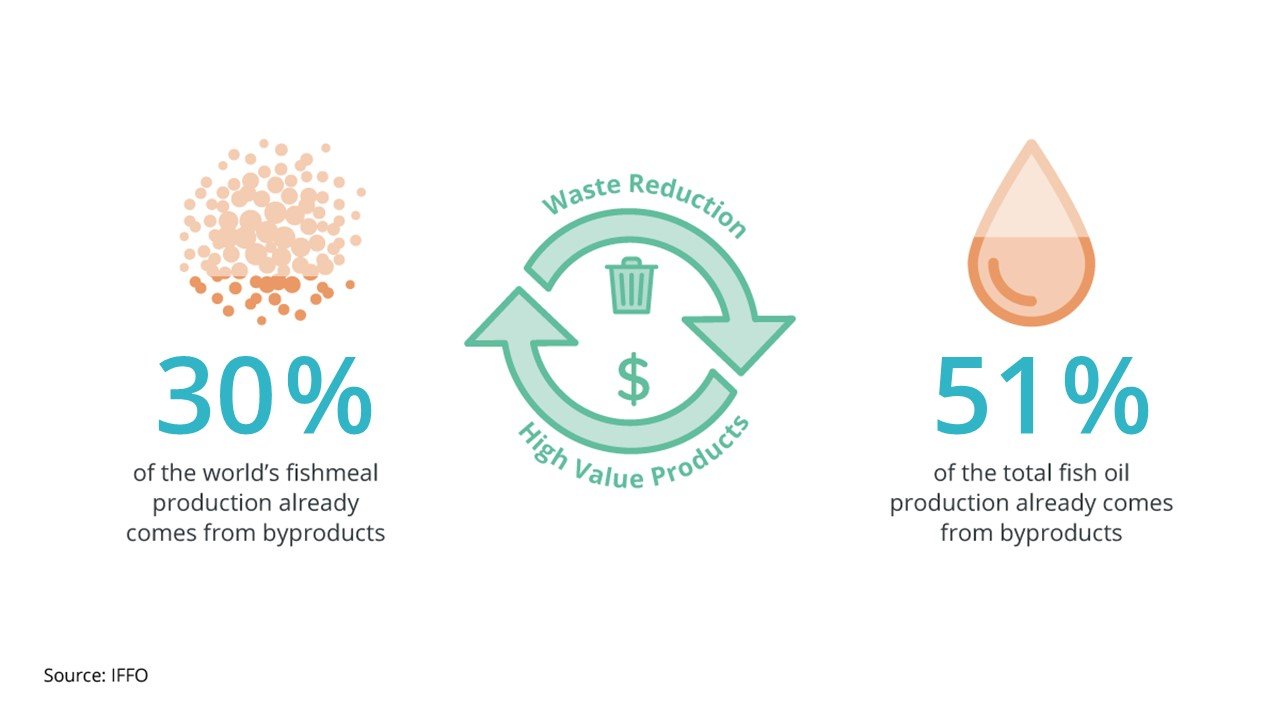
The marine ingredients industry has been supporting the growth of aquaculture as the most effective way to produce protein, and will continue to do so

Action is already being taken by the marine ingredients industry
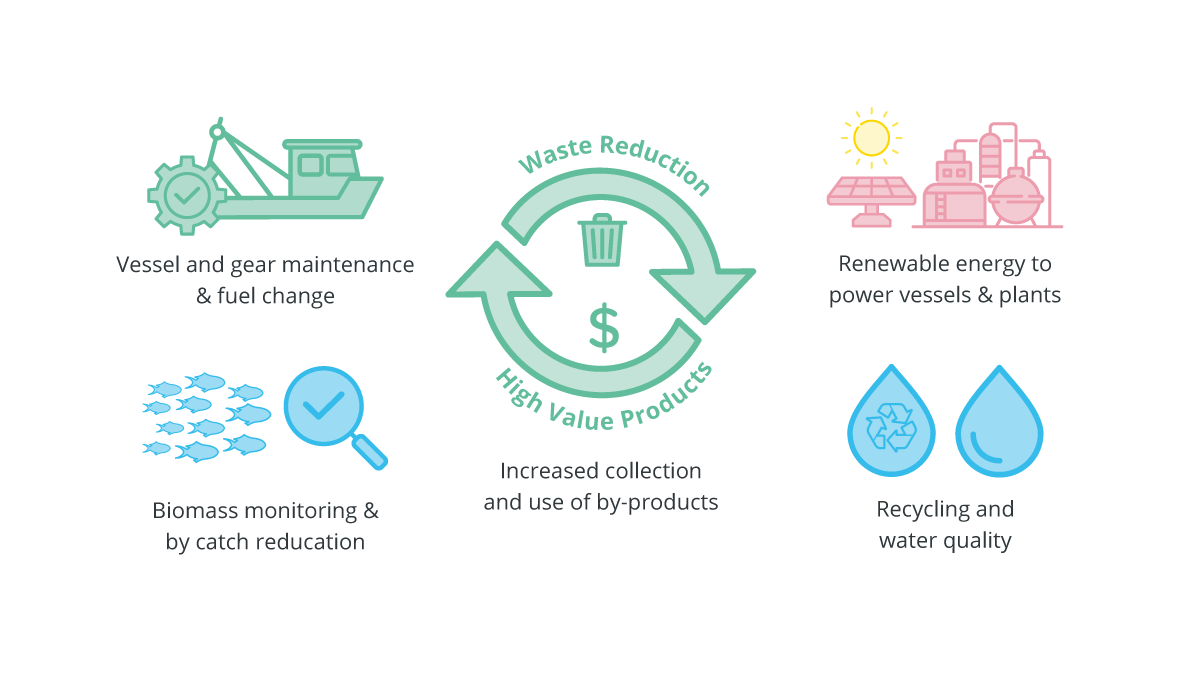
More to be done: IFFO encourages the industry to take further actions and reduce their production’s carbon footprint, while assessing impacts throughout all stages of the value chain

IFFO advocates for decision-makers to invest more in blue food systems
